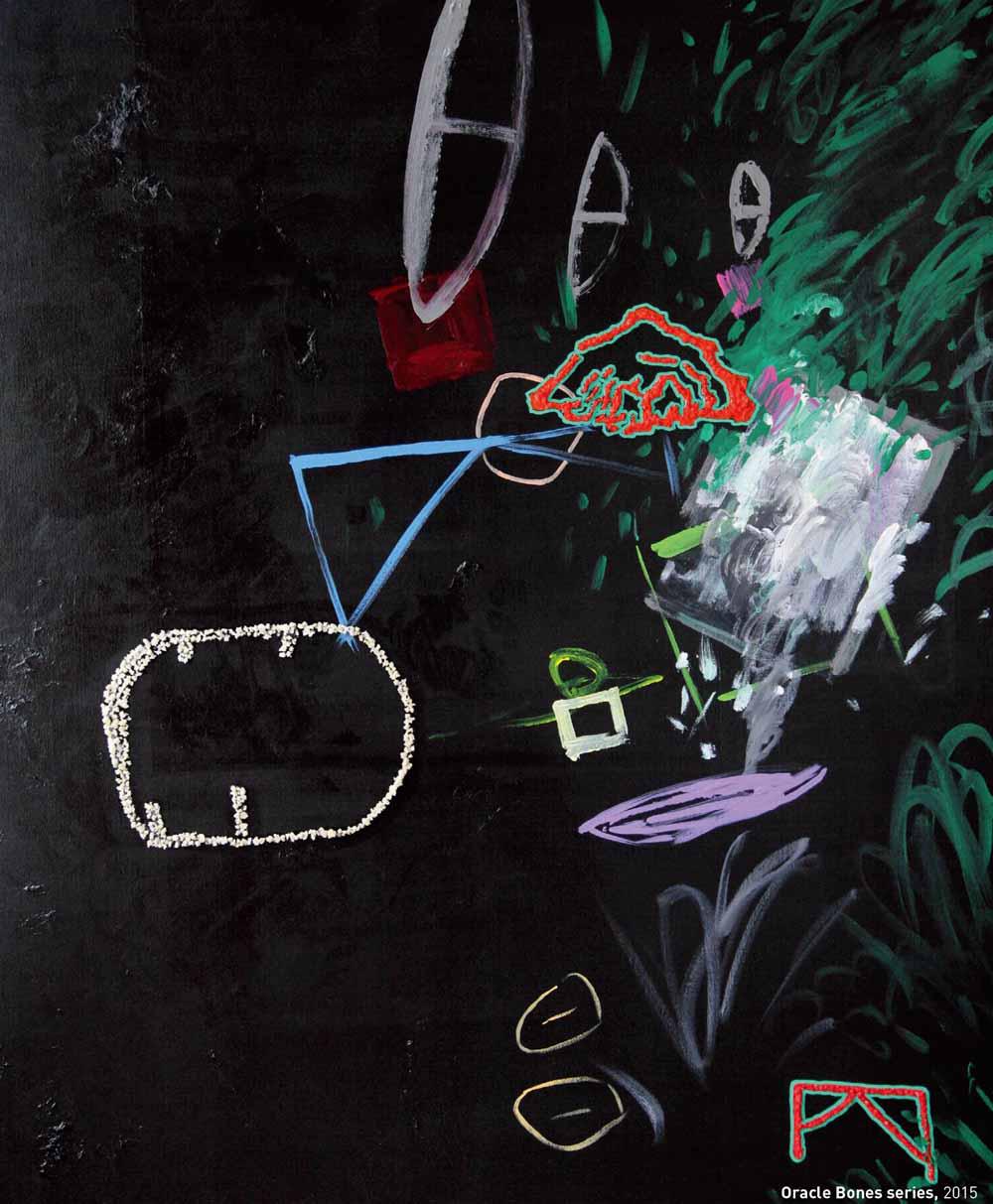Blending East and West
2016-01-10魏达维
魏达维


Born in Harbin, northeastern Heilongjiang Province, Wei Dawei (魏達维) is an artist who insists on exploring the East-West divide in his works and how cultures can co-exist within globalization. In his recent “Western Style and Eastern Charm” (西风东韵) exhibition in Beijings 798 Art District, visitors can find three representative series: the “Animal”, “Oracle Bones”, and “Mountain” series. At first, his works appear pleasantly abstract, but careful observers will notice a pattern emerging, patterns blending East and West.
What were you hoping to express through these works? Contemporary art is globalized, and my motivation was to make an East vs. West dialogue, putting Eastern cultural symbols in Western contexts to create a new aesthetic spectrum. These three series all hope to present such a dialogue. I think artists should pursue this consistent way of thinking to make their work somehow connected. Only in that way can an artists work be succinct.
What do you hope to accomplish by representing two distinct cultures together?
Most ideas in my paintings originate from Chinese traditional elements like oracle bone inscriptions and mountains and rocks in Chinese ink-wash drawings. Ive been familiar with these elements since childhood. I dont think artists should leave aside the traditional culture that cradled them. Influenced by my father, I grew up learning and practicing Chinese calligraphy and Chinese traditional ink paintings; in college my major was Western oil painting. These experiences led me to my current style. I chose oracle bone inscriptions because theyre obviously images and pictographs that can be easily transferred to graphs. Then, I used Western methods to paint them and put them against an abstract Western background.
For the foreign viewers who might not understand those Chinese symbols, what do you expect them to feel?
For Chinese, theyre characters with meanings, but foreigners have no idea what those oracle bones mean. However, these symbols will remind them of the abstract art in their culture. I cannot control how they understand my work, and I dont mind if they interpret these works in their own way.
You have emphasized in your work that Eastern and Western culture are engaged in a dialogue but you dont try to combine them. Why is that?
Emphasizing “dialogue” between Chinese and Western culture rather than combining them is because, through my work, people recognize obvious symbols of two cultures which are standing on their own. Yet, from the aesthetic angle, they support each other in the same picture. While making these paintings, I intentionally let the traditional culture stand out. Its a cultural identity that cant be given up. - L.S.
